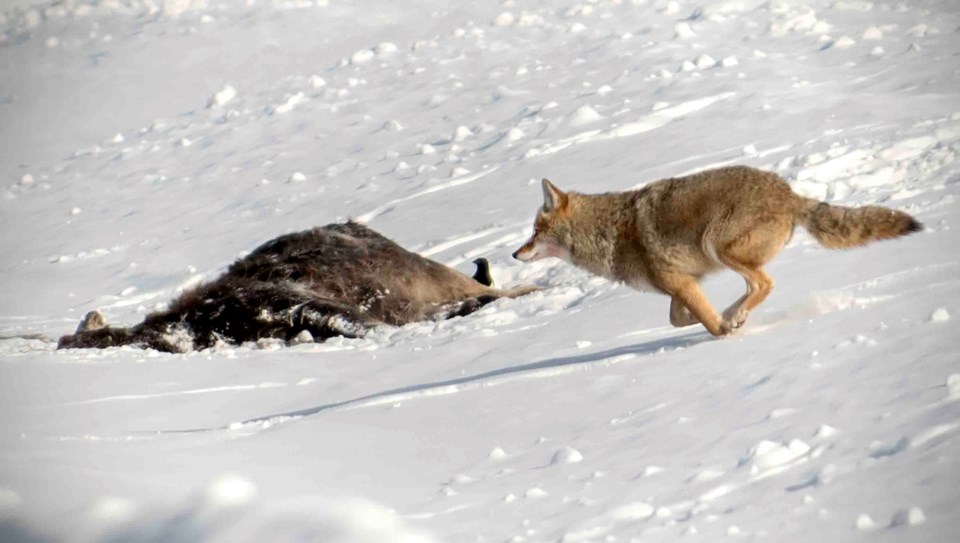Editor's Note: This article contains some graphic descriptions of cats that were found deceased in St. Albert.
Dead, dismembered cats in St. Albert are almost certainly the result of coyotes rather than serial killers, finds a new U of A study.
University of Alberta biologist Colleen Cassady St. Clair and veterinary pathologist Nick Nation published a study last month that looked at a rash of cat killings in St. Albert and Edmonton between 2007 and 2017.
About five dead and dismembered cats were found in St. Albert’s Deer Ridge neighbourhood in 2007 to the horror of many residents, the Gazette archives report. At the time, the St. Albert RCMP described the killings as deliberate and formed a task force with the Edmonton Police, the Alberta Society for the Prevention of Cruelty to Animals, and others to find the culprit. No arrests were ever made.
Nation said he was called in to examine the cats by the task force. As similar cases piled up over the years, he and St. Clair began to suspect that predators, specifically coyotes, could be the cause.
“Coyotes are the apex predators in urban areas,” St. Clair said, and are known to eat cats. There’s up to a hundred coyotes around St. Albert and a thousand around Edmonton in any year.
The two re-examined 53 cat necropsies that Nation had performed between 2007 and 2016 for Edmonton and St. Albert to see if a culprit could be found.
Many of the cats were found split in half near the bottom third vertebra, which is the loosest, weakest point, St. Clair said – you can see it in how a cat sways its hips. This would likely happen if an animal shook the cat or two animals fought over it – both behaviours common amongst coyotes.
Many also had their intestines pulled out.
“That seems pretty gruesome to people,” St. Clair said, and caused many to think this was intentional mutilation, but it makes sense when you remember that intestines are covered with energy-rich fat. The guts of these cats were usually stripped of fat, suggesting scavenging.
Other clues included the hair along the wounds, which was tufted as if dragged between saliva-covered fangs instead of cut straight with a blade, and the presence of coyote-like fur in the cat claws. The cats were also often found near homes, where a cat would run if it were under attack, or near places where a coyote was likely to be spooked by people and drop its prey (schools and walking paths).
The team determined 68 per cent of the mutilated cats had been killed by coyotes while 15 per cent died from blunt trauma (likely a car, as they were often found by roads) and were then scavenged by coyotes. The rest were either pet burials or indeterminate, as there was not enough tissue found to determine a cause. None showed clear signs of human-induced abuse.
The study concluded coyote predation and scavenging were responsible for most, if not all, of the dismembered cats found in Edmonton and St. Albert.
“There hasn’t been some kind of psychopath on the loose in St. Albert,” St. Clair said.
St. Albert RCMP Const. M.J. Burroughs said this lined up with her experience at the detachment.
“Any time we’ve been notified by the public about a deceased cat, our investigation has always led to (the conclusion of) death by coyote,” she said.
“We never assume it’s a serial killer.”
Burroughs said anyone who finds a dead cat should still call it in to bylaw or the police so they can investigate in case it is an actual case of animal abuse.
St. Clair said she hoped this study would help police with future cases of suspected cat abuse, and encourage owners to keep their cats indoors or on leash.
“The cat might not like to be restrained or kept indoors, but they would probably like this fate even less.”
The study (which contains pictures readers may find disturbing) can be found at bit.ly/2ULC4Sf.




